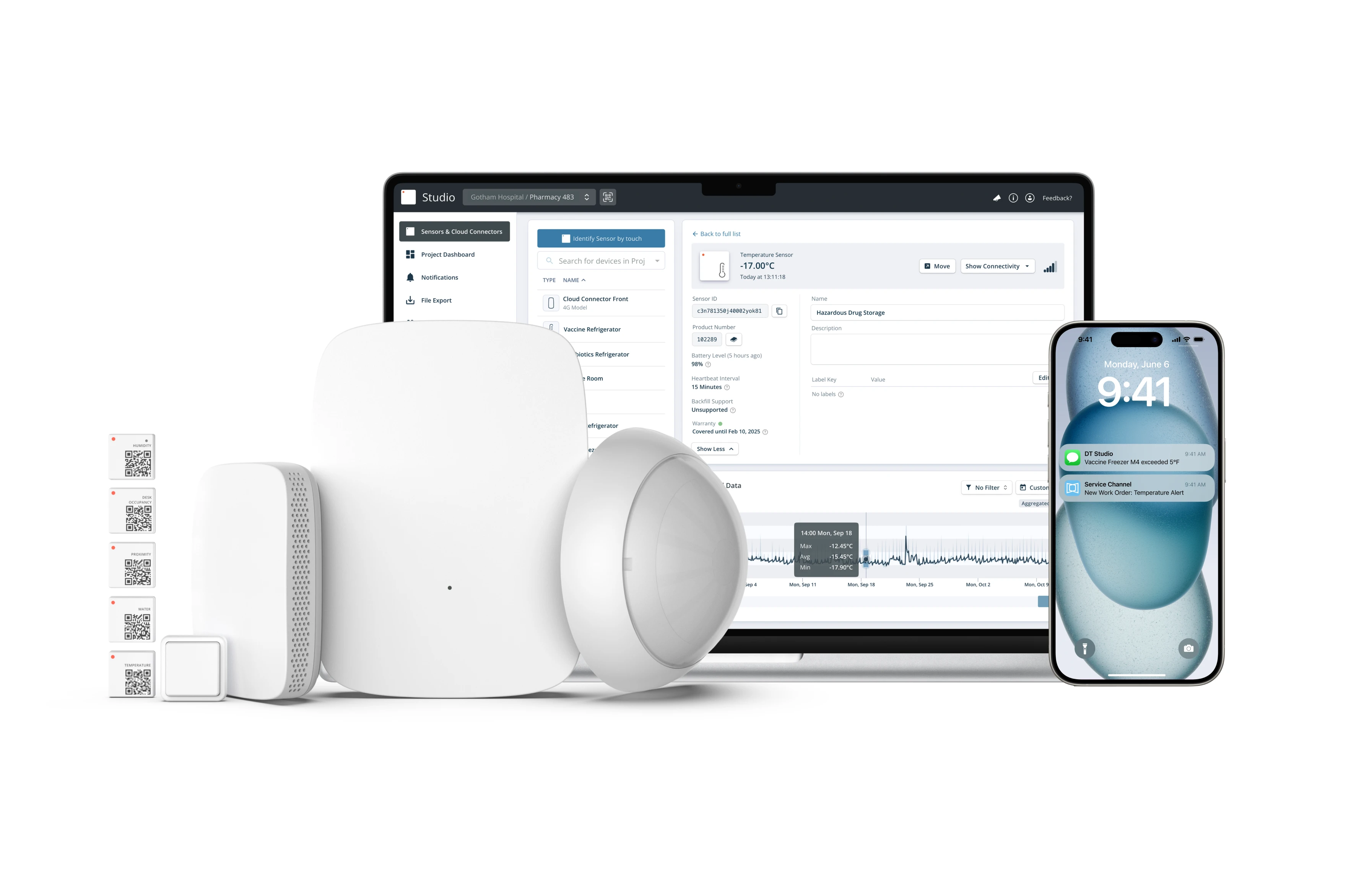7 Features Shared By The Best Wireless Temperature Sensors

Temperature sensors are the backbone of remote monitoring and efficiency in smart buildings, cold storage management, and predictive maintenance for machinery. Temperature sensors gather data about the environment and optimize business processes through analytics.
The selection of deployment of the correct wireless temperature sensor is crucial to temperature sensing. Most sensors are wireless i.e. cordless sensors that transmit their readings over the air. Wireless sensors enable remote and intelligent sensing functionalities. Their characteristics define their ability to fulfill application requirements in a variety of sectors.
Characteristics of temperature sensors include:
- Size
- Autonomy
- Power efficiency
- Accuracy and high resolution
- Configurability
- Scalability
- Data rates
1. Temperature Sensor Size
The size of a sensor determines its appropriateness for various applications. In principle, tiny sensors are more pervasive and easier to deploy in the physical environment.
Nevertheless, there are cases where small size sensors have limitations such as inadequate accuracy and resolution. It is therefore important to balance small size with other characteristics of the sensors in line with the needs of the target application.
2. Temperature Sensor Autonomy
Sensors that can operate autonomously for longer times are usually preferred over sensors that require frequent replacement of their energy source (e.g., battery). This is because autonomous sensors save configuration efforts and minimize maintenance costs.
However, as sensors become smaller and more sophisticated, the development of sensors with high autonomy is a very challenging task. Smaller sensors do not usually provide space availability for batteries with high capacity, while the increased functional sophistication of sensing devices asks for more energy.
3. Temperature Sensor Power Efficiency
The power efficiency of a temperature sensor is one of its most fundamental properties. It is directly linked to its autonomy, as energy-efficient sensors can operate without a power source replacement for longer times.
At the same time, it also boosts the environmental performance of applications that comprise large numbers of sensors, as power-efficient sensors provide a reduced carbon footprint.
4. Temperature Sensor Accuracy and Resolution
The ability to obtain accurate, high-fidelity measurements for the task at hand is fundamental towards a successful sensor deployment. Many applications require high-resolution sensors.
Nevertheless, there are also cases of whether relative temperature measurements are required. In these cases, the precision of the absolute measurements of the sensor is less important.
5. Temperature Sensor Configurability
Configurability is one of the most desired characteristics of a sensor. End-users ask for flexibility in deploying, configuring and managing sensing devices at the minimum possible effort. This is especially essential in cases where sensors are deployed in harsh environments that are not easily accessible to human workers.
6. Temperature Sensor Scalability
Most industry applications need many sensor nodes. Hence, the scalability of sensor deployment is another important factor but trade-offs with range should also be considered.
Scalable deployments provide ways for increasing the number of deployed sensors without any essential impact on the overall performance and the cost of the deployment.
7. Temperature Sensor Data Rates
In recent years, Wireless Sensor Deployments make extensive use of data mining techniques such as Machine Learning (ML) and Artificial Intelligence (AI). The latter operate over very large amounts of data i.e. Big Data datasets. Wireless sensors that can provide many data points are preferred over sensors that provide lower data rates.
Bottomline
Heating, ventilation, desk occupancy, water pumps, electrical motors, fridges, and freezers can all be monitored and optimized for efficiency thanks to temperature sensors. For example, the timely detection of temperature abnormalities in the cold chain reduces the number of wasted products. Likewise, the analysis of an asset’s temperature values can lead to predictive maintenance, which reduces downtime and increases equipment lifetime, improving cost-efficiency and sustainability.

Easy-to-Deploy IoT Sensors & Infrastructure
Get Started


.png)
.png)

